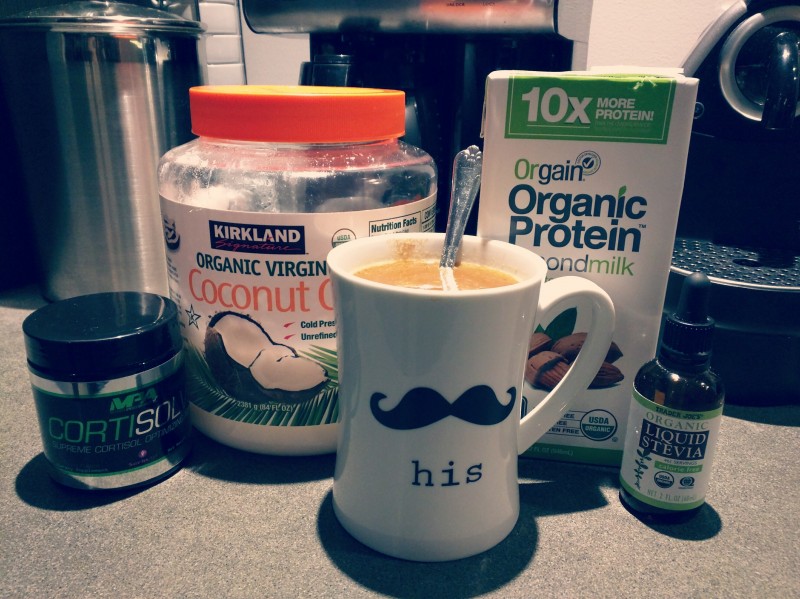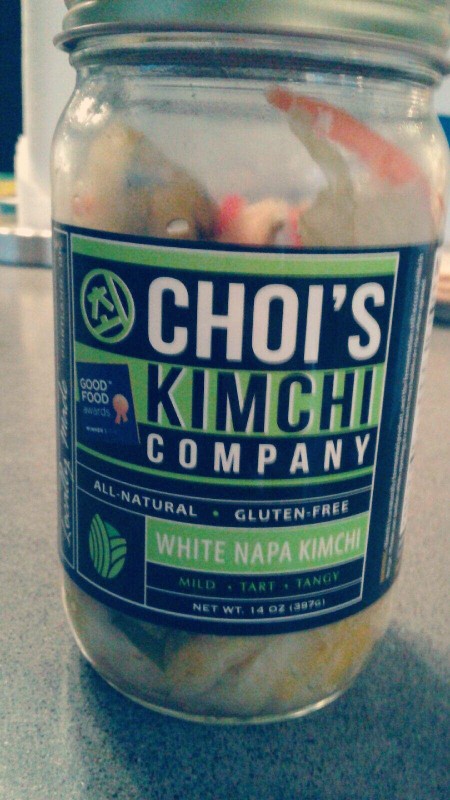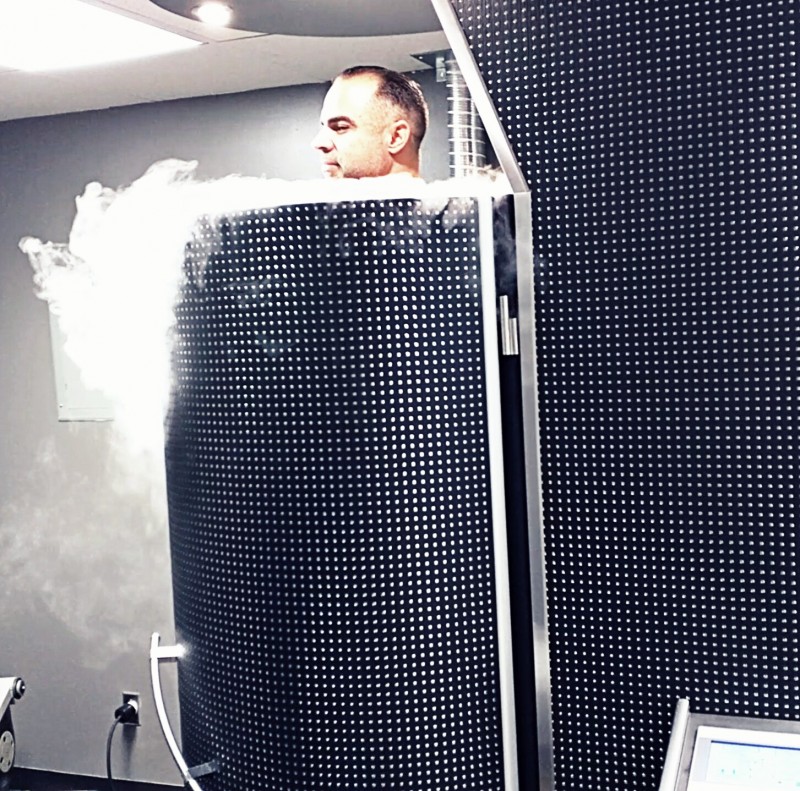
The only constant in life is change. I’m turning 42 in December and keenly aware of the fact I once categorized men in their 40s as old. I guess some men in this life stage call into question their career, marriage and perhaps the automobile they drive — all of which sound silly, but it can happen.
Thankfully, I’m rather content in all the aforementioned, so if you’re seeking advice on how to successfully navigate a mid-life crisis, I’m probably not the guy. I am, however, uniquely attuned to my body. Competing at a very high level in bodybuilding competitions obviously, plays a significant role in this phenomenon. Therefore, the list that follows represents seven things #trending in my life right now in regard to optimizing my health.
RECENT: Family-Owned Business Lessons from Garden Fresh Foods
Health optimization holds benefits for both present day athletics and future longevity. Thus, it holds value for us all, regardless of age. A healthy inside lends itself to a healthy outside, so take note if you care about your body’s appearance. I’m not a medical doctor or certified nutritionist (you’ve been warned), but I’m invested in my physique and improving it shares close ties with health optimization.
1. Curcumin
Prompted by studies on inflammation I began supplementing with curcumin years ago for joint health and found it more beneficial than the widely advised glucosamine and chondroitin combination. In the last several years, more and more studies trace the roots of various diseases back to inflammation within the body. Inflammation is the body’s response to stress – be it diet, lifestyle or environmental. Acute inflammation in response to a cold virus or a brutal leg workout is normal and good. However, the presence of a continuous, low-grade, chronic inflammatory response leads to premature aging and diseases such as cancer, heart disease, arthritis and many others. What began as a fight for healthy joints now proves beneficial for anti-aging and disease prevention.
Dose: I personally take up to 2,500 mg divided throughout the day and recommend consuming it with other dietary fats.
2. Coffee
The adrenal hormone cortisol contributes to the regulation of a number of bodily functions in response to stress. It naturally fluctuates throughout the day and night via circadian rhythm, hence the reason the consistency and length of time in which you sleep is important. A frequent stress response leads to an overabundance of cortisol and in time can cause adrenal fatigue.
So what’s the connection with coffee? The problem occurs when we roll out of bed in the morning and immediately reach for a cup of coffee on an empty stomach. Cortisol levels are naturally high in the morning and coffee (the caffeinated kind) sends it even higher. Seriously elevated cortisol will lead to muscle breakdown.
We work hard to gain muscle so let’s keep it without losing the enjoyment of our coffee. To accomplish this, we must optimize our coffee with a few additions. The first is fat and I prefer to use coconut oil or grass-fed, organic butter. Second, I add unsweetened almond milk by Orgain because it contains 10 grams of organic, plant-based protein per serving. I also prefer including a scoop of CortiSolve from Matt Porter Approved, which contains naturally occurring phospholipids to optimize cortisol. I enjoy a bit of sweetness so I’ll finish this off with some liquid Stevia. In doing all of this I now took a potentially physique- and adrenal-fatiguing cortisol spike and blunted it with healthy fat, protein, and a clinical dose of phospholipids. Drink up and enjoy the antioxidants and reduced risk of becoming diabetic (not true with sugar-laden Starbucks coffee concoctions) from your coffee with these beneficial additives.
Dose: Six ounces organic coffee, tablespoon coconut oil or organic butter, three ounces unsweetened almond milk, a scoop of CortiSolve, and some liquid Stevia (Trader Joe’s brand).
3. Hot Yoga
You may begin to see a pattern here regarding the effects of chronic stress and its health damaging partner chronic inflammation. Hot yoga and/or infrared saunas expose the body to extreme heat, which in turn causes stress. The key differentiating factor here is the acute vs. chronic nature of the stress. Heat stress activates genes that optimize heat shock proteins (HSP) inside cells. HSP is involved in longevity and more specifically in this context the prevention of plaque formation in the vascular system.
Sweating assists detoxification from environmental toxins such as phthalates, bisphenol A (BPA), and heavy metals. This is good news, considering modest estimates indicate we experience an average daily exposure of more than 700,000 toxins. Sweat production coincides with an increased heart and respiration rate, which in turn aids calorie expenditure. Furthermore, the breathing techniques practiced in yoga lead to a reduction in stress. Activating HSP while simultaneously detoxifying via yoga is a win/win.
Dose: I participate in three, 60-minute Hot Hatha Yoga classes each week. If I miss one I spend 30 minutes in my infrared sauna at home.
4. Vitamin D
I’m from Seattle. You know, the city where it rains all the time? We only get roughly 152 sunny to partly sunny days per year, which probably explains why everyone is sad. That’s an actual disease – Seasonal Affective Disorder. I personally love the winter because it means I get to snow ski, but perhaps SAD prevention played a role in my naturopathic doctor’s suggestion to supplement with vitamin D. It turns out that recent research indicates raising your serum 25-hydroxyvitamin D to above 40 ng/ml can potentially cut your cancer risk by 67% over those with low levels. While natural sunshine is the best form for vitamin D optimization, my recent blood test returned a score of 89 ng/ml, so supplementation can help.
Dose: I take 10,000 IU of D3 (cholecalciferol), which includes 90 mcg of vitamin K on a daily basis.
5. Kimchi
Similar in nature to sauerkraut, Kimchi is a traditional Korean fermented vegetable dish. The benefits of each product is found exclusively in the raw, unpasteurized, probiotic varieties found in the refrigerated section of your neighborhood grocery store. Healthy gut flora plays a role in a wide variety of health issues including metabolism, vitamin production, mineral absorption, and detoxification. Stress, toxins, and modern day processed foods can wreak havoc on our microbiota.
Poor gut health impacts the efficacy of our immune response to everything from a common cold to more serious diseases such as cancer. In fact, some now say that inflammation from endotoxins may very well contribute to the obesity epidemic. Researchers discovered that despite the acidic environment of the human stomach, the lactic acid bacteria found in kimchi will survive the digestive system better than a probiotic supplement.
Dose: ½ cup each day.
6. Sex
The health benefits of sex mirror those associated with previously listed items – stress reduction, boosted immune function, improved sleep, and reduced blood pressure. Yes, sex is way better after 19 years of marriage. I’ll argue that anyone who tells you otherwise is in a dysfunctional marriage or their bed-hopping singleness is shrouded in ignorance. I confess I’ve lived long enough to experience both sides, and sex in a long-term covenant relationship wins hands-down. God’s design is better and he’s not out to rob you of pleasure.
Case in point: God, as the author and creator of all things, invariably means he’s responsible for gifting women with a clitoris – a part of their anatomy which serves no other biological purpose than to give pleasure. So yeah, God’s not a stuffy, legalistic, highly religious, baptist preacher from the 80’s. He created sex and designed it to be pleasurable. He just so happened to also hem it in with boundaries for our safety.
If in reference to sex, "two will become one flesh" and being considered a mingling of souls, it only stands to reason that a good God would reserve sex for its proper time and place. Consider this: 20 million Americans contract a new sexually transmitted disease every year in the United States, and the vast majority of individuals don’t know they have it. Covenantal sex solves this problem. Sexual freedom isn’t found in the absence of restrictions, but in the presence of the right restrictions.
Dose: Three times per week. Anything less and Christina and I get grumpy.
7. Cryotherapy
Bodily exposure to extreme cold holds health benefits similar to exposure to extreme heat—as per hot yoga, previously mentioned—but also includes additional advantages. Cryotherapy involves entering a chamber for two to three minutes in which the temperature is reduced to negative 230 to 240 Fahrenheit via nitrogen vapor. A few of the ensuing physiological responses include activating the central nervous system, stimulating the metabolism (brown fat activation), creating an endorphin release, reducing inflammation, and increasing collagen production in the sub-dermal skin layers.
Brown fat activation may be the coolest benefit — pun intended. Yes, your body carries both white and brown fat cells. White fat cells function primarily as storage tanks for those extra holiday triglycerides you created while sitting and watching college bowl games eating pumpkin pie. Brown fat, on the other hand, is full of mitochondria and actually burns calories to produce heat. Exposure to extreme cold activates and proliferates brown fat production, resulting in improved blood sugar metabolism and possibly increasing your metabolic set point.
Dose: I personally do a double-freeze session after leg workouts on Saturdays.
Conclusion
One disclaimer: I mention #trending because I’m not so smug as to lay claim to the fountain of youth. Science continues to advance and I found it best to hold health claims loosely. I distinctly recall the FDA extolling the health benefits of partially hydrogenated oils (trans-fat) in the 1980’s only to do an about-face decades later. I am holding out hope that sex maintains its health benefit staying power.
My list is far from complete. It simply represents a few prominent examples. Reduction or elimination of dietary sugar/processed carbohydrates, consumption of broccoli/cruciferous vegetables, optimization of Omega-3 to Omega-6 fatty acids, and consumption of organic meat and produce items all play a role in optimizing health, along with countless other items. I suggest focusing on a few things until they become a part of your lifestyle and then slowly add others over time.















That was a valid question...thanks for the catch. The negative was left out when editing the article, but it should be fixed now.
Thank you,
Mark
By the way, it's great that you include your piece about God, as a blogger as well it's great to know you can talk about God and not get hated on. Keep it up brother!
-Luke
Thanks for the positive feedback and glad you're going to give yoga a shot. I personally think it's super-beneficial on several levels - Namaste!
All the best,
Mark
Yeah, I think Kombucha is another great way to consume beneficial bacterial. We got a scoby and my wife began making her own at home lately!
All the best,
Mark